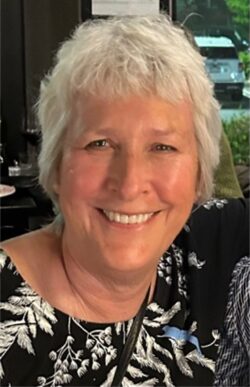Education
Vera grew up in suburban Philadelphia and, as a child, frequently traveled to the German Alps and the New York Adirondack Mountains, places that instilled in her a love of nature. She was inspired to study biology at the Indiana University of Pennsylvania, where she received her B.S. degree, then moved south where she received her M.S. in Marine Biology and Ph.D. in Biochemistry and Molecular Biology from the University of Miami. As a Ph.D. student in the lab of Daniel Baden, she was invited to complete her dissertation research on identification of the brevetoxin receptor site on sodium channels in the lab of William Catterall in the Pharmacology Department at the University of Washington in Seattle, WA, where she also completed her postdoctoral research.
Life and career
Vera finished her postdoctoral studies in 2006 and was hired by the National Oceanic and Atmospheric Administration (NOAA) in Seattle, Washington, USA, to enhance their marine biotoxins program. With knowledge gained about toxin receptors, her first project as a principal investigator combined her interests in biochemistry and ocean science to demonstrate that shellfish develop resistance to saxitoxins using a single site mutation in the sodium channels of their nerves (Bricelj et al., 2005). Domoic acid appeared on the Washington coast in 1993, and it became clear that HABs were an increasing problem on the U.S. West Coast. With her knowledge of biochemistry, she was able to bring unique tools to the field of ocean science that allowed for rapid screening of biotoxins on cruises, leading to the discovery of the Pseudo-nitzschia initiation sites, including the Juan de Fuca eddy, Heceta Bank, and Point Conception. This work led to a multitude of research project that use these “natural laboratories” to study HABs. During her time at NOAA, Dr. Trainer was a global leader in Pseudo-nitzschia research, impacting Pseudo-nitzschia physiological ecology, phylogeny, toxicity, monitoring, and effects on ecosystem health. Her paper in "Harmful Algae" (Trainer et al., 2012) is foundational for Pseudo-nitzschia research. After a 30-year career with NOAA, she became the Marine Science Director of the Olympic Natural Resources Center at the University of Washington where she is focusing her efforts on strengthening community partnerships across the State of Washington through leadership of the Olympic Region HAB partnership (ORHAB) and the SoundToxins program. With depth of intellect and leadership, Vera served as the President of ISSHA, the Science Board Chair of the North Pacific Marine Science Organization (PICES), a member of the Washington State Academy of Sciences, a delegate and advocate for the United Nations Decade for Ocean Sciences (2021-2030). She is a member of the Steering Committee of the Marine Mammal Commission’s Unusual Marine Mammal Mortality Events, which supports research to understand the causes of marine mammal illness and death. The Seattle Aquarium awarded her the Conservation Research Award in 2023, honoring leaders and innovators in marine conservation research and inspiring conservation of our marine environment.
Vera was a research leader in 9 globally significant HABs research projects: 1. Ecology and Oceanography of Pseudo-nitzschia HABs in the Pacific Northwest; 2. Cross-Regional Comparison of Dinophysis Bloom Dynamics, Drivers, and Toxicity; 3. Expanding the Southeast Alaska Tribal Ocean Research Program for Monitoring of Amnesic Shellfish Poisoning and Diarrhetic Shellfish Poisoning; 4. Multidisciplinary Approach to a Cross-Regional Problem: Dinophysis and DSP Toxicity; 5. Ecophysiology and Toxicity of the Toxic Alga Heterosigma akashiwo in Puget Sound: A Living Laboratory Ecosystem Approach; 6. Harmful Algal Blooms, Acidification and Climate Change in the Salish Sea; and Strengthening Early Warning and Forecasts of Domoic Acid Events in the Pacific Northwest: 7. Using the Environmental Sample Processor to Close the Data Gap; 8. Integrated multi-stressor observations, modeling, and experiments to inform management in the Northern California Current; and 9. Offshore HAB Sampling using an Autonomous Surface Vehicle (AUSV) in the Pacific Northwest.
Vera has established herself as an intellectual leader of HAB research – and the prognostication of global HAB events, with >100 publications and >7,000 citations (as of June 2024). These performance levels place her in the top 1% of researchers in HAB research.
Research strategy and mentoring
Vera’s exceptional qualities as a person and a scientist have influenced us individually and elevated the entire scientific community. Her profound scientific knowledge has propelled us to surpass our own expectations. Vera introduced the HAB community to a self-penned concept, Humanistic HABs. It is not about individuals who died or were sick; members of ISSHA have a responsibility to generate the absolute best, progressive research and path through a world for the surviving individuals, communities, and society. She is dedicated to creating community/scientist relationships/responsibilities with nature impacted by HAB events. She established that we needed more human potential in the research of HABs. In Vera’s view, HABs are not a scientific research problem but an issue of society's responsibility for environmental issues. Purposeful, community-based research activities. As a leading scientist, she brought Tribal-Science connections to the forefront. She offered training and insight to non-traditional, self-managing communities from California to Alaska, Guatemala to the Philippines, the Cook Islands, and Indonesia.
Vera’s impact is more significant than just HABs. She opened her science and her heart to the world. In a typical story, North Pacific Marine Science Organization members met in Qingdao, China, in 2015. Vera skipped the excursions and arranged a visit to Middle School No. 39, where she shared her ideas and wisdom on marine science, oceanography, and climate change with many of the 2800 students. After signing the guest book, she left the school writing, “Keep up the great work. You are the scientists of our future!”
Vera greatly enjoys national and international collaborations, particularly with young scientists and underrepresented people, to enhance our cultural, scientific and personal understanding of one another. She has mentored N. Adams, B. Bill, A. Gregory, C. Ikeda, N. Inaba, K. Kelly, K. Lefebvre, L. Metz, S. Moore, A. Robertson, C. Swift, C. Wingert, S. Wood.
10 Key Publications
Hallegraeff, G.M., Anderson, D.M., Belin, C., Bottein, M.-Y., Bresnan, E., Chinain, M., Enevoldsen, H., Iwatake, M., Karlson, B., McKenzie, C.H., Sunesen, I., Pitcher, G.C., Provoost, P., Richardsonm, A., Schweibold, L., Tester, P.A., Trainer, V.L., Yñiguez, A.T., Zingone, A. 2021. Perceived global increase in algal blooms is attributable to intensified monitoring and emerging bloom impacts. Nature Communications Earth & Environment. 2, 117.
Trainer, V. L., S. K. Moore, G. Hallegraeff, R. Kudela, A. Clement, J. Mardonez. 2020. Pelagic harmful algal blooms and climate change: lessons from nature’s experiments with extremes. Harmful Algae. 101591.
Wells, M.L., Karlson, B., Wulff, A., Kudela, R., Asnaghi, V., Berdalet, E., Cochlan, W., Davidson, K., De Rijcke, M., Dutkiewicz, S., Hallegraeff, G., Flynn, K., Paerl, H., Legrand, C., Silke, J., Suikkanen, S., Thompson, P., Trainer, V.L., Trick, C. G. 2019. Future HAB science: directions and challenges in a changing climate. Harmful Algae, 91, 101632.
McCabe, R.M., Hickey, B.M., Kudela, R.M., Lefebvre, K.A., Adams, N.G., Bill, B.D., Gulland, F.M.D., Thomson, R.E., Cochlan, W.P., Trainer, V.L. 2016. An unprecedented coastwide toxic algal bloom linked to anomalous ocean conditions. Geophysical Research Letters. 43, 10,366–10,376.
Trainer, V.L., Bates, S.S., Lundholm, N., Thessen, A.E., Adams, N.G., Cochlan, W.P., Trick, C.G. 2012. Pseudo-nitzschia physiological ecology, phylogeny, toxicity, monitoring and impacts on ecosystem health. Harmful Algae. 14: 271-300.
Smayda T.J., Trainer, V.L. 2010. Dinoflagellate blooms in upwelling systems: seeding, variability, and contrasts with diatom bloom behavior. Progress in Oceanography. 85,1-2.
Moore, S.K., Trainer, V.L., Mantua, N.J., Parker, M.S., Laws, E.A., Backer, L.C. and L.E. Fleming. 2008. Impacts of climate variability and future climate change on harmful algal blooms and human health. Environ. Health 7, S4.
Anderson, D.M., Burkholder, J.M, Cochlan, W.P., Glibert P.M., Gobler, C.J., Heil, C.A., Kudela, R., Parsons, M.L., Rensel, J.E., Townsend, D.W., Trainer, V.L. and G.A. Vargo. 2008. Harmful algal blooms and eutrophication: Examples of possible linkages from selected coastal regions of the United States. Harmful Algae 8(1): 39-53.
Bricelj, V. M., Connell L., Konoki K., MacQuarrie S. P., Scheuer T., Catterall W. A., and Trainer V. L. 2005. Sodium channel mutation responsible for saxitoxin resistance in clams increases risk of PSP. Nature 434: 763-767
Scholin, C.A., Gulland, F., Doucette, G.J., Benson, S., Busman, M., Chavez, F.P. Cordaro, J., DeLong, R., DeVogelaere, A., Harvey, J., Haulena, M., Lefebvre, K., Lipwcomb, T., Loscutoff, S., Lowenstine, L.J., Marin III, R., Miller, P.E., McLellan, W.A., Moeller, P.D.R., Powell, C.L., Rowles, T., Silvagni, P., Silver, M., Spraker, T., Trainer, V.L., and VanDolah, F.M. 2000. Mortality of sea lions along the central California coast linked to a toxic diatom bloom. Nature 403, 80-84.
Prepared by Charles Trick and William Cochlan

